Dust to the Dust! but the pure spirit shall flow
Back to the burning fountain whence it came,
A portion of the eternal.”
P.B. Shelley.
Yves Klein is one of the most interesting, innovative and controversial artists of the 20th century. He was also, arguably, the most egotistical. His gift for self promotion through publicity stunts is legendary. Amongst other things he commissioned several advertisements in which he declared himself to be France’s greatest living painter; he claimed the blue sky to be his first art work; he appropriated a day of the world as another and claimed to possess the ability to fly.
At the start of his career in 1954 he presented himself to the art world as an already established artist by publishing a book 'Yves Peintures' that displayed a collection of 10 colour prints:
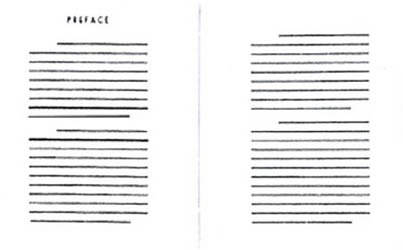
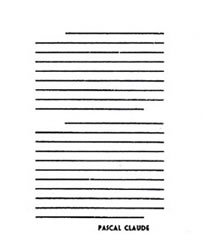 He claimed these to be reproductions of monochrome paintings
that he had shown at private exhibitions at least five years earlier. However,
not only is there no record of these exhibitions ever actually taking place,
but there are no traces of the 'original’ paintings that the book professes
to represent.
He claimed these to be reproductions of monochrome paintings
that he had shown at private exhibitions at least five years earlier. However,
not only is there no record of these exhibitions ever actually taking place,
but there are no traces of the 'original’ paintings that the book professes
to represent.
In retrospect it becomes clear that the monochromes displayed in the book
are not photographs of existing paintings, but plates that have been created
specifically for the purposes of the book. The book therefore in its limited
edition is a set of original artworks in their own right and also perhaps
a portal through which to view Klein's metaphysical exhibition.
"The captioned coloured papers are themselves supplements which create the fiction of the central idea: the idea that a rectangular field of nothing but pure colour may constitute a painting. Klein’s pretence that the coloured papers are reproductions keeps alive the ideal quality of the hypothetical originals, and, not incidentally for his later work, it keeps the hypothetical original paintings in a state of immateriality.” (1)
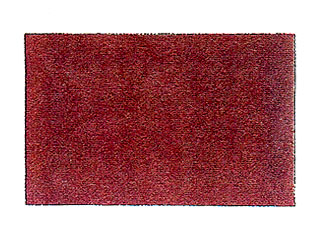 The
controversy generated by Klein's trickery is typical of his career and a fine
example of the philosophy that he propounded throughout. He consistently ridiculed
the art establishment, overtly confronting the complacency with which it regarded
practices that had become acceptable/comfortable. Klein, more than any other
artist of his time, with the possible exception of Duchamp, called into question
the nature of art and what constitutes a work of art.
The
controversy generated by Klein's trickery is typical of his career and a fine
example of the philosophy that he propounded throughout. He consistently ridiculed
the art establishment, overtly confronting the complacency with which it regarded
practices that had become acceptable/comfortable. Klein, more than any other
artist of his time, with the possible exception of Duchamp, called into question
the nature of art and what constitutes a work of art.
"When Klein exaggerates vanguard practices to the point of mockery, he forces us to question the canon of the idealist tradition that equates creativity and originality.” (2)
"The idea of painting pure monochromes is 'explained' as a valid form of art by a little book – a subordinate object – which proposes that the idea must be valid because it was worth reproducing. Such supplements to a central idea are abundant in Klein's work." (3)
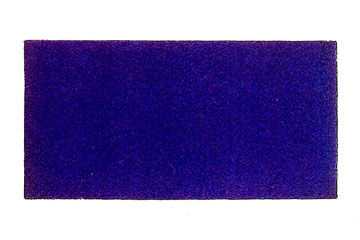 Both of Klein's
parents were artists, his mother was an abstract painter his father was a
figurative painter. This background afforded him an insight into the arts
and he was familiar with the contemporary issues of the day in relation to
the arts.
Both of Klein's
parents were artists, his mother was an abstract painter his father was a
figurative painter. This background afforded him an insight into the arts
and he was familiar with the contemporary issues of the day in relation to
the arts.
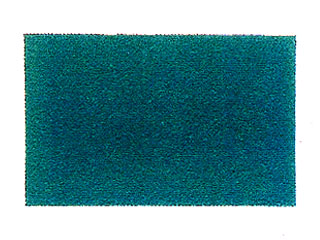 Yves grew up harbouring a deep seated resentment for the world of art, holding
it responsible for the frequent separations that he'd had from his parents
during his childhood. As an adult he felt the need to establish his identity
as an individual quite independent of his parent's world. He turned his
attention towards studying the teachings of the Rosicrucians and to the practise
of Judo.
Yves grew up harbouring a deep seated resentment for the world of art, holding
it responsible for the frequent separations that he'd had from his parents
during his childhood. As an adult he felt the need to establish his identity
as an individual quite independent of his parent's world. He turned his
attention towards studying the teachings of the Rosicrucians and to the practise
of Judo.
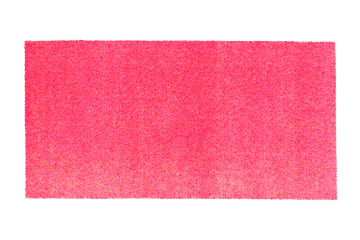
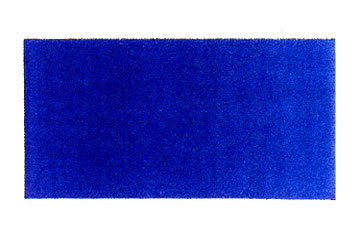 "For
him the monochrome was from the beginning an expression of Rosicrucian
thought , but on another level it was an attack on the whole word of painting
as then known - an attack on the figurative paintings of his father and
the abstract painting of his mother. It made them both seem unnecessary
and by implication mocked them." (4)
"For
him the monochrome was from the beginning an expression of Rosicrucian
thought , but on another level it was an attack on the whole word of painting
as then known - an attack on the figurative paintings of his father and
the abstract painting of his mother. It made them both seem unnecessary
and by implication mocked them." (4)
"Judo
has helped me to understand that pictorial space is above all the product
of spiritual exercises." (5)

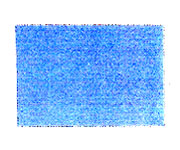

In 1955 Klein submitted a painting for exhibit at the Salon des Realites Nouvelles, the painting was an orange monochrome that he called 'Expression de l'univers de la couleur mine orange'
The painting was rejected and Klein was informed that it would only be shown if he would agree to add to it in some way, another colour, a dot perhaps?
Klein refused. In retrospect this episode must have proved highly embarrassing for a gallery which prided itself on being the broadminded champion of avant-garde.
"I refuse to provide a spectacle in my painting. I refuse to compare and put in play, so that some stronger element will emerge in contrast to other weaker ones. Even the most civilised representation is based on an idea of 'combat' between different forces, and the onlooker assists at a death-scene in a painting, a drama, morbid by definition as it's a question of love and hate. For me, the painting is an individual, I want to consider it as such and not judge, above all, not judge it!" (6)
Klein believed in the purity of colour, he looked upon painting as meditation that accessed another plane of existence:
"entering into the world of colour as a physical matter, a question of vibrations, wavelengths and resonances" (7)
When we encounter pure colour it awakens the slumbering spirituality within us that had been hitherto muffled by the mad confusion of colour and sound that we experience every day. So much confusion that we have to analyse, we need to judge. Being exposed to a vast bank of pure colour drowns out the noisy confusion within and can help to silence the analytical, discrimating, judgemental voices as it sort of stumps them to silence. The physical effect, as if transcending the intellect, a sense of elation followed by a deep mental silence,
In Klein's personal lexicon colour was synonymous with good and line was synonymous with evil. He had declared war on line and form, pronouncing them to be corrupting influences, he described line as behaving like the bars of a prison that confine and constrict the spiritual power of pure colour. He cast himself in the role of the hero who would liberate pure colour and reinstate to it its rightful place. In his writing "The War: A Little personal Mythology of the Monochrome" Klein developed the ideas that formed part of the background for his personal quest:
"[In the beginning] pure colour, the universal soul in which the human soul was bathing in a state of earthly paradise, was mastered by the invasion of line, imprisoned, compartmentalised, cut apart, returned to slavery. In the joy and delirium of its guileful victory, line subjugated man and imprinted on him its abstract rhythm." (8)
Later that year (1955), he held his first exhibition at Club des Solitaires in which he displayed monochromes of various different colours. He was disappointed to notice that those viewing the exhibition seemed unable to appreciate the monochromes as individual propositions. They seemed to find it necessary to measure the decorative elements of the different coloured paintings in relation to one another.
 Realising that he was up against the public's ingrained habitual way
of looking at things he decided to concentrate on exhibiting only blue monochromes.
Thus he entered into what he described as his "blue period".
The blue monochromes he executed in a medium that became known as 'International
Klein Blue'
Realising that he was up against the public's ingrained habitual way
of looking at things he decided to concentrate on exhibiting only blue monochromes.
Thus he entered into what he described as his "blue period".
The blue monochromes he executed in a medium that became known as 'International
Klein Blue'
For a long time Klein had harboured a fascination with the vibrancy of pure pigments and expressed disappointment that the colours would dull and lose their resonance when they were mixed. It was in order to avoid this dulling and toning down that led to his experiments with various compounds. IKB consists of the usual pigment and thinner, but the binder was an industrial polymerised vinyl acetate. For Klein, who wanted to be able to work fast, another important feature of using this in the compound was that it caused the paint to dry very quickly.
His first exhibition of Blue Monochromes, "L'Epoca Bleu" was held at Guido Le Noci's Galleria Apollinaire in Milan. In this exhibition he displayed several monochromes which were identical in size, shape and colour. Each of the monochromes was hung about eight inches away from the wall. The style and theme of this exhibition demonstrates the interlocking of several 'codes' which provide us with a good example of Klein's conceptual eclecticism.
"The title of the exhibition, L'Epoca Bleu, makes ironic reference, in art historical terms, to Picasso's famous Blue period but in Rosicrucian terms it indicates the age in which matter will be dissolved and humanity will return to the bodiless Eden of space-as-pure-spirit which Heindel symbolised by blue. The blue monochromes themselves represent the melting of forms into prime matter beyond internal differentiations, while in terms of art history they are a sharp (and timely) rejection of L'art informel; phenomenologically they deny the subject-object dichotomy by forcing the 'observer' to participate in the creation of their meaning.
The fact that the paintings were hung about 8 inches in front of the wall is also a conflation of codes; in Rosicrucian terms it indicates the end of the age of gravity and the beginning of the age of levitation." (9)
It was Klein's
intention to "invade the space of the observe" (10).
He wanted the monochromes to transcend conventional illusionistic pictorial
space and become a part of the viewers' reality, their minds, their hearts.
Suspending the monochromes in front of the wall signifies a launch from the
material world in to the immaterial. This concept he was to expand and explore
further in his legendary 'Leap into the Void' in 1960.
"The fact that the paintings were more or less identical is again an expression of the triple code: in Rosicrucian terms it refers to the underlying sameness of the absolute or ground of being beneath all individual beings; in art historical terms, it is anti-illusionistic, insisting upon the material 'thinghood' of the components, phenomenologically regarded, it is a strategy to break up the viewer's complacency of perceptual habit." (11)
Contributing to the above mentioned 'strategy' was the fact that Klein priced each of the monochromes differently, intimating that contrary to appearances each of the paintings were in fact quite individual. He considered that the discussion and analysis that ensued around each of the paintings, attributed to them an additional value. He wanted to address what it is that classifies something as 'Art' and what it is that determines the value of the work of art. He highlighted his concern for this issue in a piece of writing that references a scandal in Europe at that time, regarding fraud in the art world.
"The most sensational observation was that of the 'buyers'. Each selected out of the ... pictures that one that was his, and each paid the asking price. The prices were all different of course. This fact proves, for one thing, that the pictorial quality of each picture was perceptible through something other than the material physical appearance, and for another that those who made selections were obviously cognisant of that state of things that I call 'Pictorial Sensibility'....... So I am in search of the real value of the picture, that is, suppose two paintings rigorously identical in all visible and legible effects, such as lines, colours, drawing, forms, format, density of surface, and technique in general, but the one is painted by a 'painter' and the other by a skilled "technician", an "artisan", albeit both officially recognised as "painters" by the public. This invisible real value means that one of these two objects is a 'picture' and the other isn't. (Vermeer, Van Meegeren)." (12)
"The concentrated power of Yves Klein's work lies in the shortness of his life and its concise dramatisation of an artistic development. Take off, trajectory, stop. In that 'oeuvre' we can see a prophecy that is now working itself out, step by step. Each moment of Klein's life bears the stigmata of an enlarged, almost collective self awareness. Both in Europe and America, his quest became that of the generation succeeding him – quest of the spirit, inquiring, concentrating, advancing directed towards the sacred, the absolute." (13)
Klein is a strange mixture of high artistic integrity and low unashamed self promotion but this is consistent with a life in which contradiction seems to play a central role. Klein defies all categories. He has been by turns an existentialist, a minimalist, a conceptualist, an environmental artist, a Judokan black belt, a mystic, a painter, a performer, a writer, "a master of the poetic act" (14), a voyeur and an inventor. One thing that he clearly was not, was an expressionist and he wrote a scathing diatribe about artists who were:
"I loathe artists who empty themselves into their painting, as is quite often the case today. Morbidism (sic), rather than thinking of the beautiful, the good, the true in their painting: they express they ejaculate, they spit out every horrible, rotten and infectious complexity in their painting as if relieving themselves and putting the burden on others, 'the readers of their works', of all their sorry failures." (15)
His ingenious/disingenuous approach to the presentation of his own work and career provided much food for thought for the establishment. Underlying his various 'publicity stunts' were concepts that questioned and called attention to relevant issues relating to the arts.
Despite his interminable perpetuation of his own myth, which may have been intensely irritating at the time, (he was publicly shunned by several of his contemporaries when he exhibited in New York for the first time), he was in fact an artist of immense substance. During his short working life he choreographed a series of artistic events/happenings and explored ideas that continue to inspire and influence our way of thinking about art to this day.
From what I understand of the philosophy and theories behind Klein's work, the fact that it exists for me in my mind's eye only is in keeping with his intention in relation to 'art immaterial'. I think, therefore Klein achieved his original and essentially noble intention of raising our awareness of the many places that art occupies in the material world and in the world of our imagination and the importance of those meditations and for the artist's constant scrutiny of the intentions behind any work.
His work succeeds in transcending the limitations of pictorial space, to invade
and inhabit a portion of our real/ethereal space.
One of the many declarations that he made was that 'his manner of existence
would be the foremost artistic event of our time'. In retrospect it has
to be admitted that although his claims were lofty, they now have roots in
reality
References
- 1. P.101, Column 1, Para. 1. Assisted Levitation || <<Back to text >> ||
- 2. P.100, Column 1, Para. 3. Ibid. || <<Back to text >> ||
- 3. P.177, para 3. P.101, Column 1, Para.1. Ibid. || <<Back to text >> ||
- 4. P.30, Column 1, Para.3. Conquistador of the Void. || <<Back to text >> ||
- 5. P.25, Selected Writings. || <<Back to text >> ||
- 6. P220, Column 1, Para. 2. "The Monochrome Adventure” || <<Back to text >> ||
- 7. P.41, Column 1, Para.2. Conquistador of the Void. || <<Back to text >> ||
- 8. P218, Column 1, Para.1. Selections from "The War: etc.” || <<Back to text >> ||
- 9. P.44, Column 1. Para.3. Conquistador of the Void. || <<Back to text >> ||
- 10. Ibid || <<Back to text >> ||
- 11. Ibid. (Column 2. Para.1.) || <<Back to text >> ||
- 12. P.105. Column 2. Para. 1. Assisted Levitation. || <<Back to text >> ||
- 13. P.12, Para 2 and 3, Yves Klein: An Appreciation. || <<Back to text >> ||
- 14. P.27, Column 2. Para. 1. Conquistador of the Void. || <<Back to text >> ||
- 15. P.93, Column 1. The Monochrome Adventurer || <<Back to text >> ||
Bibliography
- Yves Klein: Conquistador of the Void, an essay by Thomas McEvilley.
- Assisted Levitation: The Art of Yves Klein, an essay by Nan Rosenthal
- Yves Klein: An Appreciation, by Jean-Yves Mock
- The Monochrome Adventurer: Selected Writings of Yves Klein.
- The War: A Little Personal Mythology of the Monochrome: Selected Writings of Yves Klein.
- All above mentioned essays are included in YVES KLEIN 1928 – 1962, A RETROSPECTIVE a compilation by the Institute for Arts, Rice University, Houston. Published by The Arts Publisher, Inc. New York.
- YVES KLEIN 1928 – 1962, Selected Writings. Tate Gallery Publications Dept.
- Yves Klein, Kunsthalle Bern.
- Concepts of Modern Art, 3rd Edition, Edited by Nikos Stangos published by Thames and Hudson.
